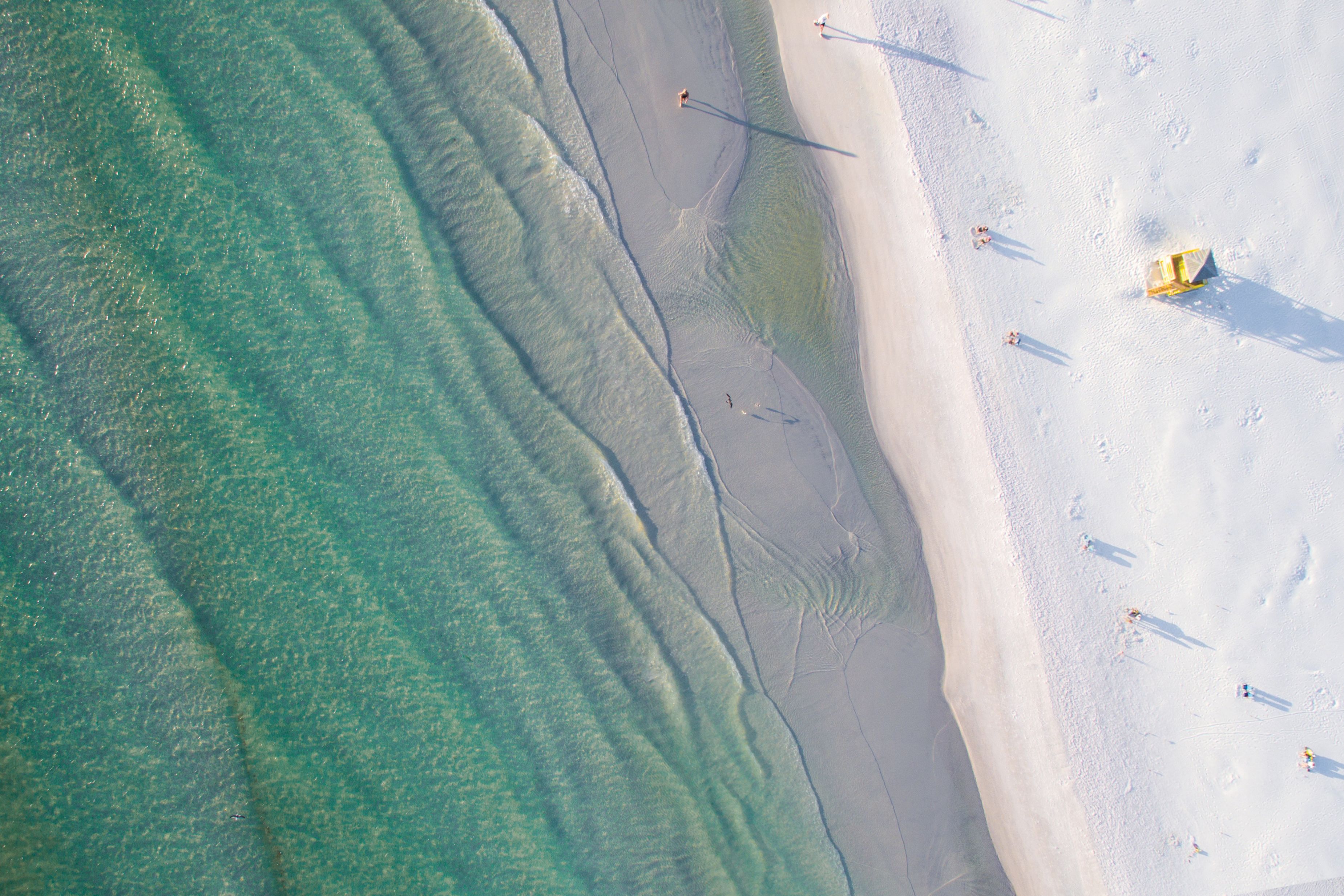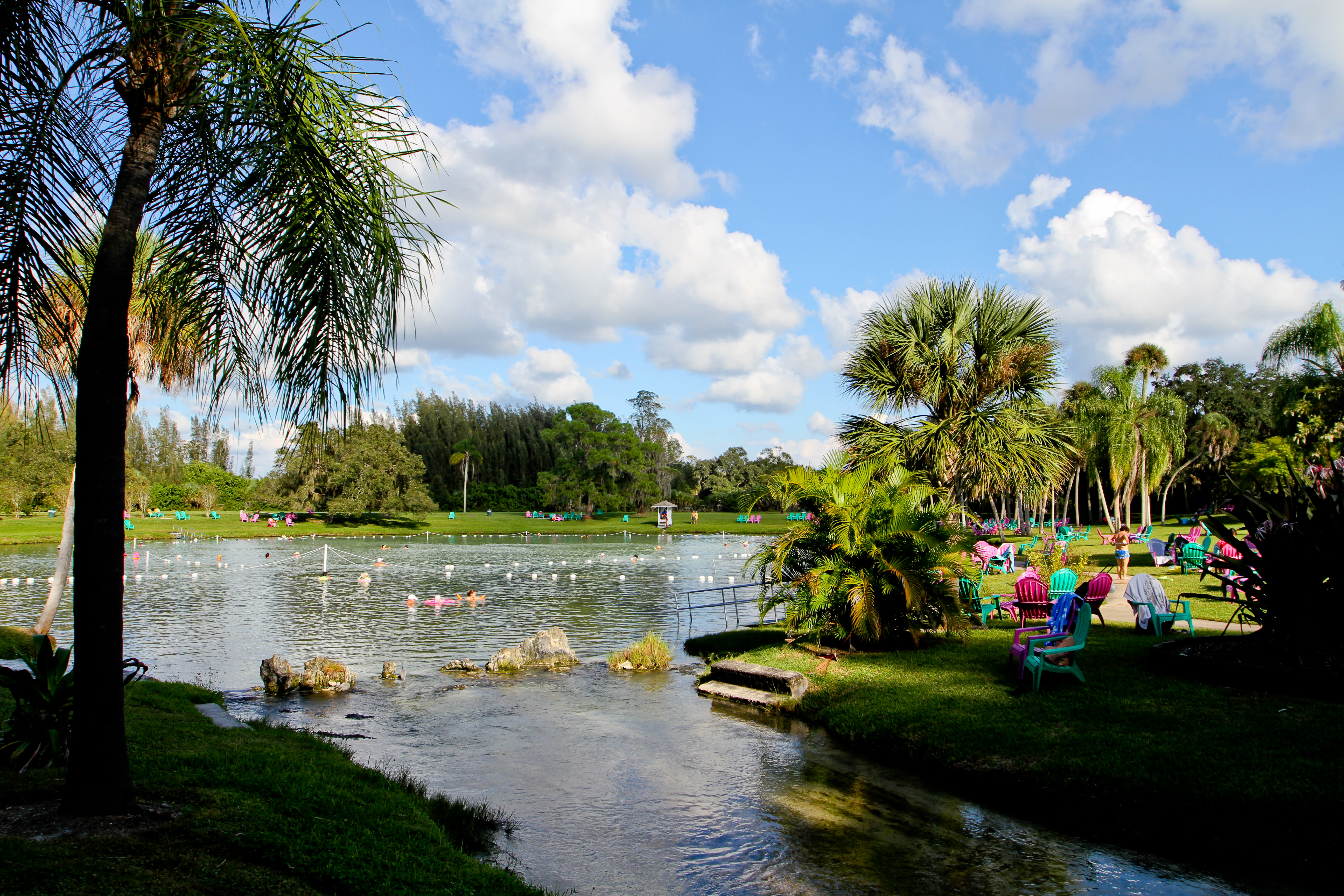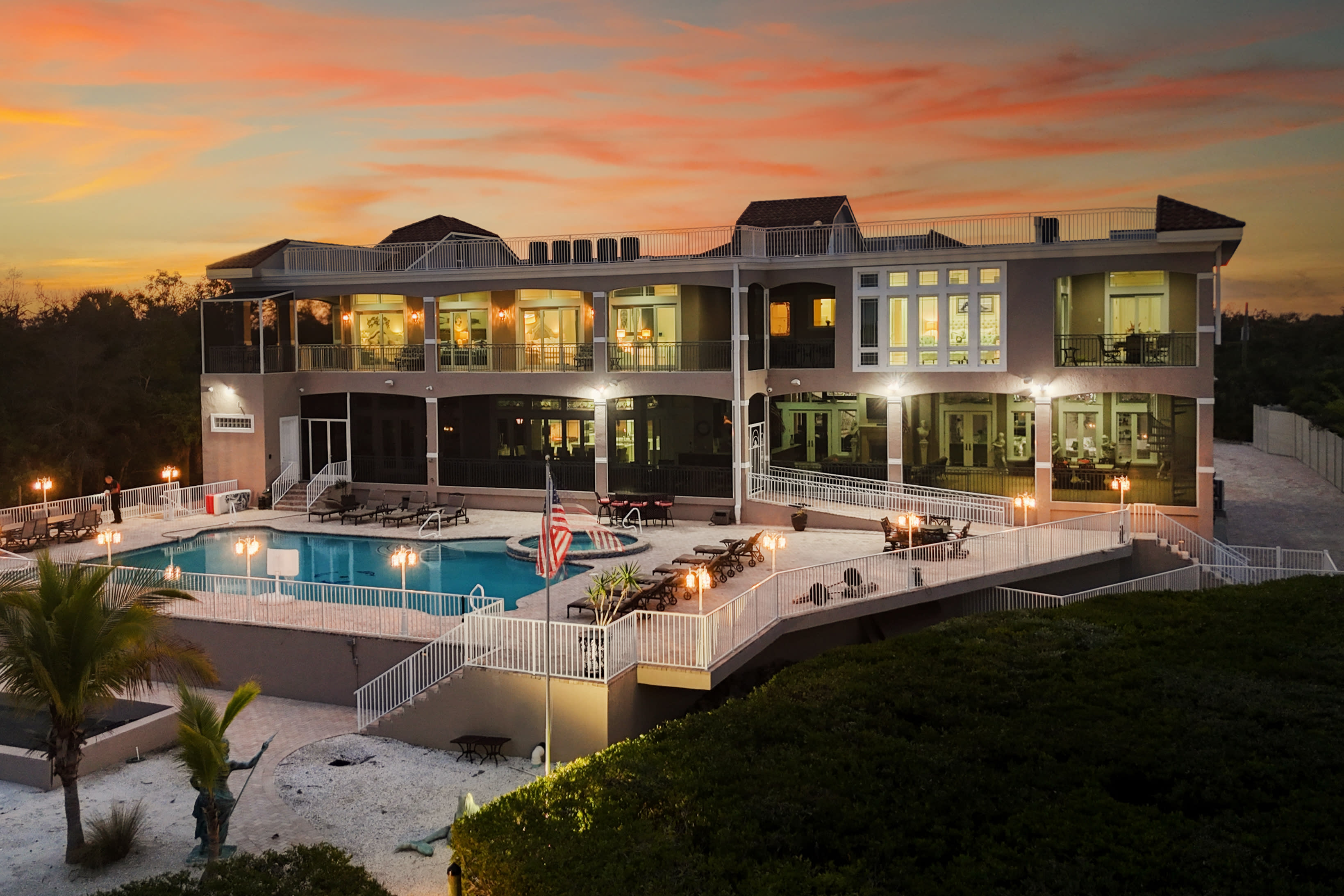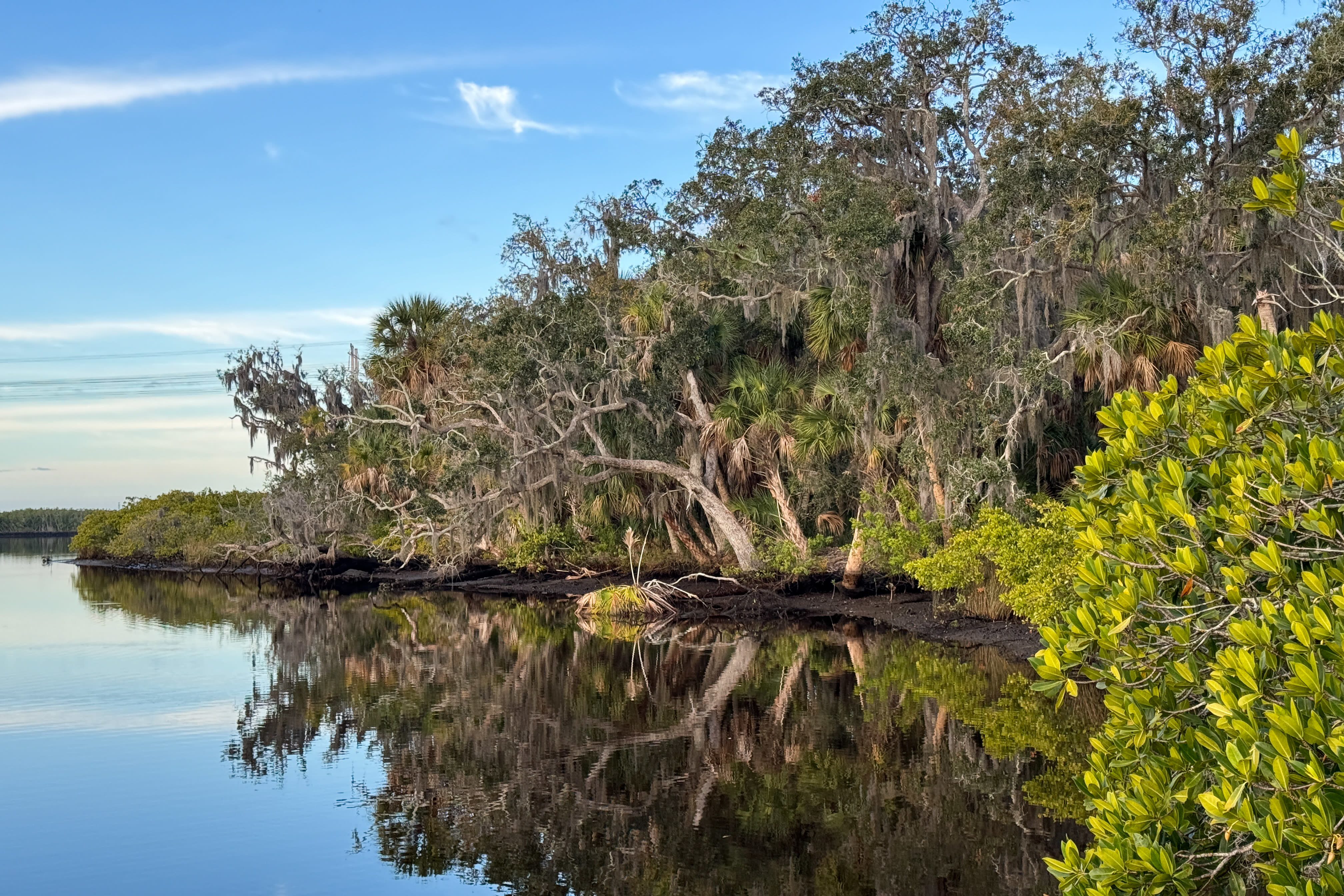The Environmental Conservancy of North Port Secures Land to Keep It Wild
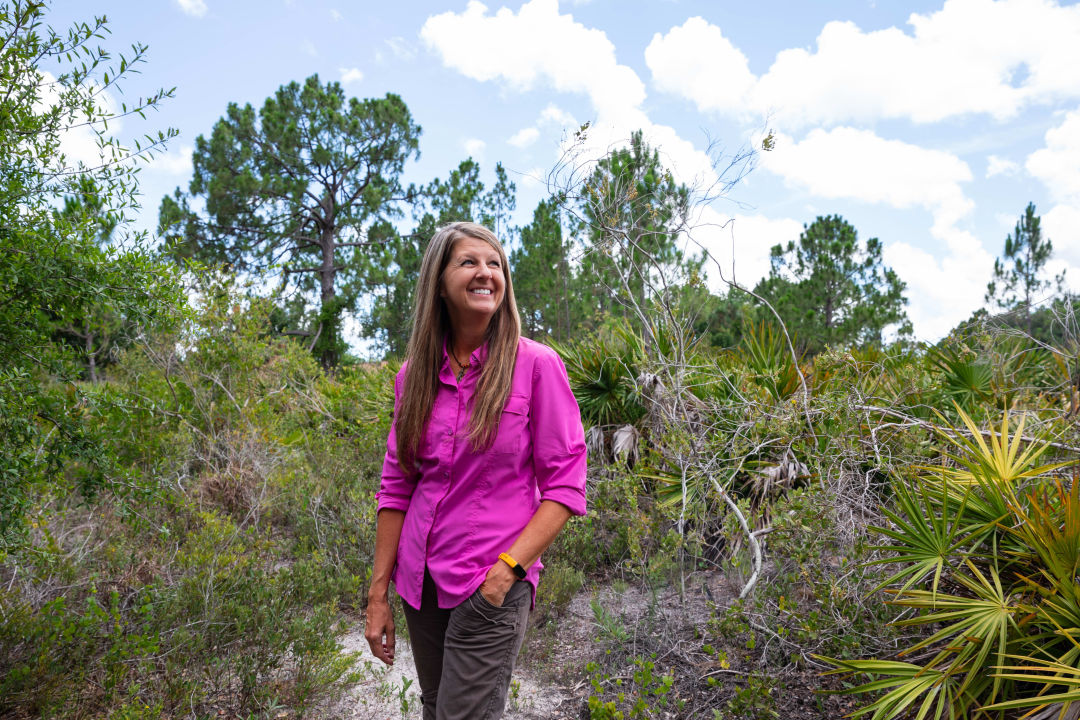
Image: Hannah Phillips
Barbara Lockhart grew up in Charlotte County as a nature lover, cherishing the landscapes and wildlife around her. But in 2018, Lockhart was walking alone on what was usually a busy shoreline at Manasota Key’s Englewood Beach. The area had been ravaged by the 2018 red tide bloom and the air was thick with the smell of dead marine life. The sight of the barren beach—more than 2,400 tons of dead marine life had to be removed in a five-county region—filled her with profound sadness.
“Everything in this beautiful area is near and dear to my heart,” Lockhart says. “Having spent my entire life in this area, I felt an overwhelming urge to act. I knew I needed to do something to protect the places I love.”
Lockhart, who lives in North Port, began volunteering for local environmental groups. She and some environmentally minded friends realized that the trees in many neighborhoods were an “illusion”—their presence doesn’t mean native plants and wildlife have the necessary resources to survive. Trees were also being lost at a rapid rate. “Every time we drive down the street, there’s another lot cleared for development, with palm trees hauled away and pine trees gone on lumber trucks,” Lockhart says.
The stakes are high in North Port, one of the fastest-growing areas in the country, with a population that has grown from about 23,000 in 2000 to 57,000 in 2010 to roughly 90,000 today. And despite its rapid development, it's only about 30 percent built out. Officials project that the city’s population will reach 250,000 in the next few decades as they develop a master plan for a substantial portion of the city's undeveloped eastern region, which would allow for more commercial and industrial use.
Lockhart works full-time as a paralegal, but her sadness and frustration about overdevelopment and its ecological consequences led her to become the volunteer president of The Environmental Conservancy of North Port. Over the past four years, she and her team—all volunteers—have been busy buying up land that might otherwise get developed. The goal is to conserve wildlife, native plants, trees and soil as southwest Florida’s population continues to swell.
Since 2020, the group has been on the hunt for undeveloped lots of all sizes, mostly small, behind the belief that an acre here and an acre there can make a big difference. It has acquired 39 parcels, totaling about 12.5 acres, without any city, county, state or federal funding. About $255,000 has been raised through public donations for the purchases and, this year, the organization is looking to expand into northern Sarasota County.
We recently talked with Lockhart about the nonprofit’s goals, challenges, successes, community engagement and more. This interview has been edited for length and clarity.
How did this organization come to be?
"In 2019, I proposed that we try a land trust or land conservancy. There’s one in Cape Coral, Wildlife Trust, acquiring land.
"In early 2020, Sarasota County was selling surplus lots in North Port. Prices were cheap, so we tried to raise the money to buy a few lots. We bid on five total. We created a GoFundMe, raising $10,000 in under two weeks."
Developers have deep pockets. Four years ago, did you doubt your ability to raise the funds needed to buy land?
"People told me, 'Nobody's going to do that. You're not going to get any money.' I didn’t know if it would work, either. But my mantra is: Asking is free. So we asked the public, and every fundraiser since has been successful."
What kind of changes have you witnessed in south Sarasota County?
"When I was 16 driving from Port Charlotte to Venice, North Port was basically a blip on the map. You had to drive to Venice if you wanted to eat at Taco Bell. There was no Wellen Park. It was all nature."
What do people in the community think about all the development? Are people excited or are they pushing back?
"Most everybody is disturbed at some level or another by the constant clear cutting and the constant paving. They might say, 'Oh, look, more clearing for another car wash.' From my conversations, they're very upset. It's disturbing how much nature we’re losing by the year."
What do you tell people who have become numb or hopeless?
"When we table at an event, people stop by and express a lot of emotion. They might say that they used to have certain wildlife in their neighborhood and now they’re gone, or the builders took down all the trees. It’s so sad. I try to tell them that it takes years, but we can stick together to conserve land."
What do you tell them about why you’re doing this work?
"Some say, 'Why do this when there are already woods in our neighborhoods?' They might say, 'Developers have deep pockets, so how could we even make a dent to balance out what they’re doing?' Our response is that any amount of green space, no matter how small, is worth saving.
"We work with one couple that has bought land around their home to maintain a gopher tortoise population. There are people spending their own money trying to save a little something because every little bit helps. We call our lots “stepping stones.”
How have you done the bulk of your fundraising?
"We have yet to find a donor who would give us an endowment or a large chunk of money that we could deposit and draw against to engage in contract purchases, which would make our efforts move faster. In the meantime, we solicit donations. We’ve gotten lump sum donations, like a $10,000 gift and one $20,000 gift. Even with smaller donations, they add up."
How do you measure the impact of the efforts?
"We track it all on our website and we do a lot of monitoring. We put trail cameras out there to capture wildlife movement to prove that our mission is protecting wildlife as well as the trees, soil and plants."
Can anyone nominate or vote on areas to buy?
"We’ve launched a land nomination program where citizens can fill out a Google form and nominate land to us that they would like us to consider. We want to spread out the mission and try to help as many areas as we can."
Do you engage with other environmental groups in the area?
"Collaboration is key, so we work with several groups. We also work with realtors. We want to have a program where every time a realtor sells a vacant lot, they might donate a little to us to give back. Chances are, that lot will be developed. We could also ask builders the same thing—give us $500 when you close on a newly built house, and we’ll use it to buy and protect land somewhere else."
Are there any specific areas that are a high priority?
"Most urgent are areas with Florida scrub jays because there’s no conservation plan for them in Sarasota County. Their habitat here keeps shrinking. It’s important because wildlife needs habitat, and many animals are getting pushed out with every acre of new homes. The biodiversity loss is mind-boggling."
What’s your most urgent need right now? Financial support?
"Yes, and volunteer support and awareness. There’s also a misconception that if a developer saves some trees, everything is great. But it’s not just the trees. It’s about the understory plants and the native plants that provide a habitat. You should save trees, yes, but also the plants around them. There’s a lack of understanding, and there are times where someone will clear a lot, build a house, then buy a bunch of plants from Home Depot. They’ll plant them there even though they might not belong in the area."
What other challenges are you facing?
"Getting more people on board to understand and support our mission."
In what ways do you engage with the community?
"In November, we'll host our second annual Harbor Heights Music in the Park. It's a fundraiser for our land acquisition efforts in Harbor Heights. It's music all day with a couple of food trucks and games. We’ll have a 5K in March 2025."
What’s your favorite part of our area’s natural world?
"I’m partial to pine trees. I’m a tree hugger in that regard. I’m also a beach person, so I love Stump Pass Beach State Park, Oscar Scherer State Park and other sandy areas."
What helps you maintain a sense of hope?
"What picks me up on a tough day is visiting an area we’ve bought, getting out of the car, walking around, taking some pictures and realizing it’s protected land. No matter how hard this gets, we’ve accomplished a lot in a short time period. That reminds me to feel grateful. And we’re not alone in this fight. We’re all in the same boat.
"And, look, we’re not against development. We all live in homes, too. We just want to coexist in a healthy way."
